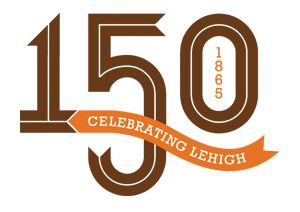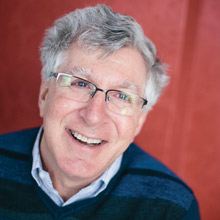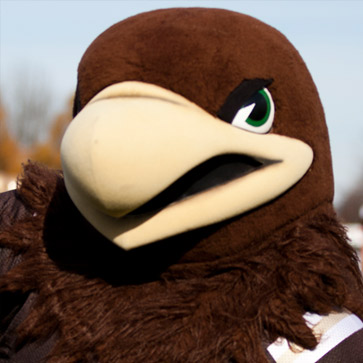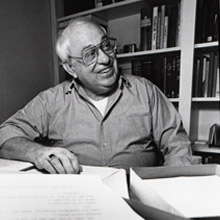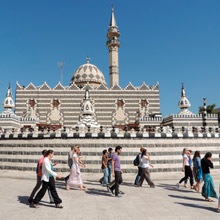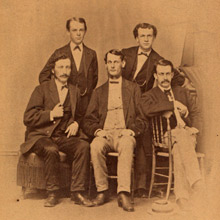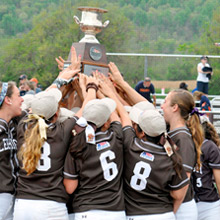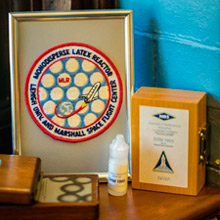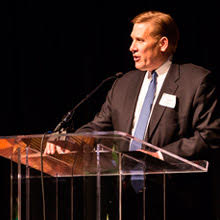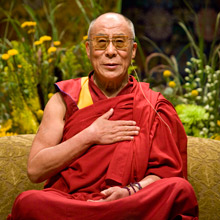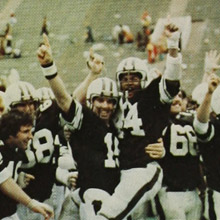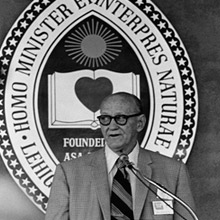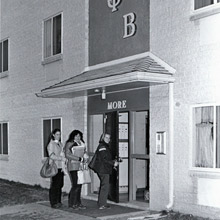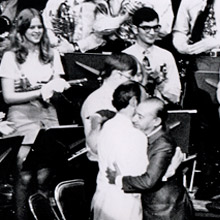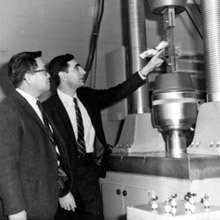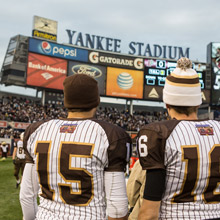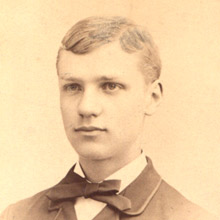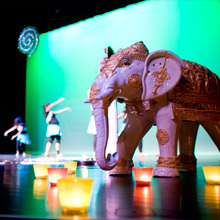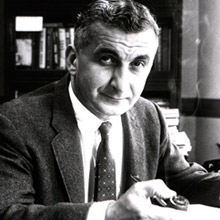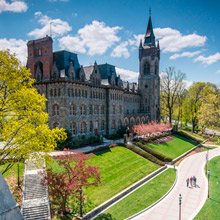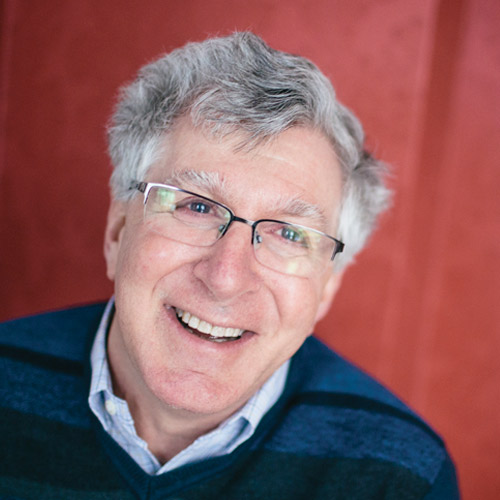
John D. Simon, an internationally renowned chemist and highly respected leader in higher education, is being formally installed today as Lehigh’s 14th president. The ceremony fittingly takes place on Founder’s Day, a celebratory day in Lehigh history for reflecting on founder Asa Packer’s vision. Founder’s Day 2015 also marks the kickoff of Lehigh’s Sesquicentennial.
Before assuming the Lehigh presidency on July 1, 2015, Simon served as executive vice president and provost at the University of Virginia, where he oversaw the academic administration of UVA’s 11 colleges, library system, art museums, public service activities and foreign study programs. Previously, he was Duke University’s vice provost for academic affairs.
Simon’s research interests have focused on understanding the structure and function of human pigmentation. Most recently, he collaborated with scientists to study the only known intact pigments recovered from the Jurassic period. He has authored or coauthored four books and nearly 250 academic papers.
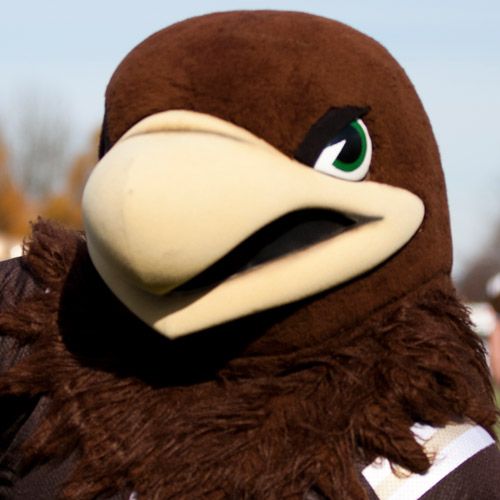
Today, he is the face of Lehigh athletics. But Clutch, as Lehigh’s Mountain Hawk mascot is known, is a relatively new arrival to South Mountain.
Prior to 1995, Lehigh’s athletic teams were known as the Engineers. Some believe the moniker reflected the university's early ties to the railroad industry. Lehigh's founder, Asa Packer, built the Lehigh Valley Railroad Company right here in eastern Pennsylvania.
The university now refers to all its athletics teams as Mountain Hawks. To preserve Lehigh's athletics history and tradition, the university continues to use the nicknames "Brown and White" and "Engineers" when referring to Lehigh athletics teams of the past, and in particular those teams prior to 1996.
While there is no species of bird known as the "mountain hawk," it is not uncommon to spot hawks sailing over Lehigh's home on South Mountain. And our fine feathered fan, Clutch, can always be spotted cheering his fellow Mountain Hawks to victory.

Joe Goldstein, professor of materials science and engineering, left a multifaceted legacy in 26 years at Lehigh. In 1969, he and Charles Sclar, professor of geological sciences, were selected by NASA to study particles taken from the moon’s surface during the first two lunar missions.
In 1970, Goldstein founded Lehigh’s annual Microscopy School, largest of its kind, which has trained 6,000 researchers from around the world.
As vice president for graduate studies and research, Goldstein helped establish the Ben Franklin Advanced Technology Center, the ATLSS (Advanced Technology for Large Structural Systems) Center and several other critical research centers.
Goldstein helped develop the electron probe microanalyzer, the scanning electron microscope and the analytical electron microscope. His textbook, Scanning Electron Microscopy and X-ray Microanalysis, was a best-seller.
In 2000, to honor Goldstein’s contributions to the study of meteorites and lunar rocks, American astronomer Schelte Bus named an asteroid for Goldstein—4989 Joegoldstein.
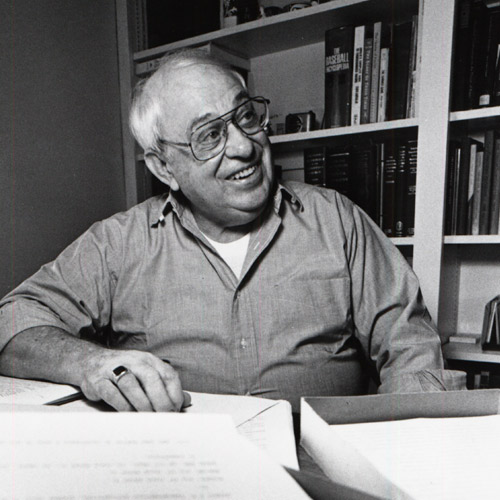
Opera and trains; surf fishing and kite design; mycology, ornithology and mystery novels—no common thread connected Albert Hartung’s passions.
Hartung was best known, however, for his service in the English department, where he earned three degrees and spent four decades as a professor. His teaching, colleagues said, was marked with compassion, rigor and genial good humor. His scholarship placed Lehigh on the world map.
Hartung spent 30-plus years editing A Manual of the Writings in Middle English, 1050-1500, which introduces beginners and experts alike to medieval British literature. The late J. Burke Severs completed the work’s first two volumes, Hartung the next eight, and Peter Beidler, a third Lehigh medievalist, the final two.
The Manual contains essays on alchemy, music, ballads, Bible translations, Middle Scots writings, hunting and fishing, geography and travel, medieval medicine, veterinary science and much more. An exhaustive bibliography contains information on manuscripts and early print sources.

Lehigh is dedicated to providing all students with international opportunities where they can experience other cultures firsthand and get the skills necessary to be more competitive in an increasingly global job market. Nearly 40 percent of the Class of 2015 had an international experience.
Lehigh offers more than 200 study abroad programs in over 60 countries, from shorter programs led by Lehigh faculty or staff to semester or year-long programs offered by our partners. The International Internship Program gives students full fellowships to participate in internship, research or practicum experiences, and academic programs like Global Citizenship and the Martindale Student Associates let students explore international issues beyond textbooks.
Students don't have to travel abroad to get an international experience. From the Global Union—a coalition of more than 50 student groups with an international component—to academic programs and relationships such as the UN Partnership, Lehigh is truly an international campus.
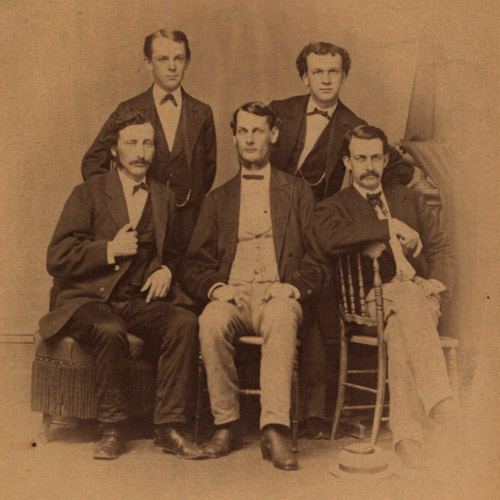
Among the men in Lehigh’s inaugural graduating class of 1869 was Miles Rock, a Civil War veteran who received a degree in civil engineering. He was said to have carried a copy of Asa Gray’s Manual of Botany in his knapsack during the war, and at commencement, he spoke about Lehigh’s trees.
A year after graduation, when an Alumni Association was formed, Rock became its first president.
Rock gained prominence as head of the Guatemala Commission from 1883 to 1898, when he worked to determine the boundary between Guatemala and Mexico. “It was due to his knowledge, his determination and pluck” that Guatemala secured its substantial land rights under threat of war, wrote the Lehigh Alumni Bulletin.
Earlier, Rock worked in the U.S. hydrographic office, where he determined latitude and longitude in the West Indies and Central America, and as an assistant astronomer at the U.S. Naval Observatory.
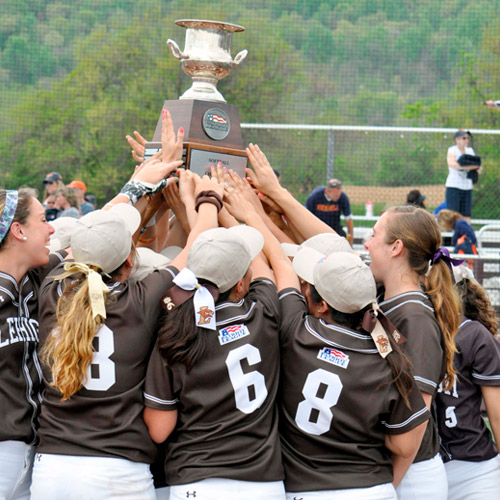
With 20 Patriot League regular season championships, 13 league tournament titles and eight NCAA regional tournament appearances earned in the past 25 years, Lehigh’s softball program has established itself as one of the most successful in the nation.
Currently led by coach Fran Troyan, the Mountain Hawks enjoyed a particularly remarkable run between 2001 and 2012, as they won eight league tournament crowns while making a big statement on the national stage as well. The 2006 squad knocked off Texas A&M twice in the NCAA regionals to advance to the regional finals, while the 2009 squad again registered a win over the Aggies en route to a finals appearance.
Troyan was named coach in 1996, taking over for his wife Sue, who went 126-90-1 from 1991-1995 before leaving to coach the Lehigh women’s basketball team. Since his appointment, Troyan has only taken the program to greater heights, racking up a record of 685-357-6.
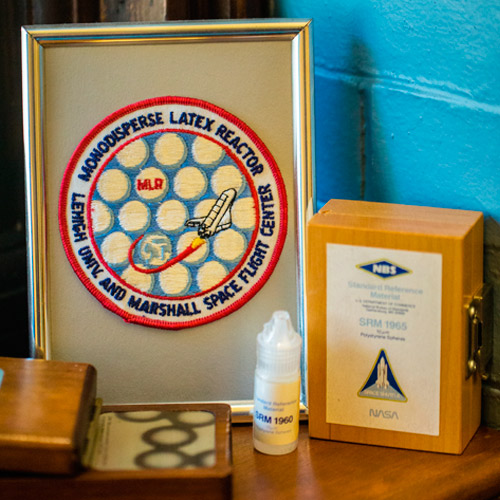
The first commercial product manufactured in space—microscopic plastic beads—used a chemical engineering process designed by Lehigh researchers with NASA funding. The tiny beads were made in 1983 in near-weightless conditions aboard the maiden flight of the Space Shuttle Challenger.
Mohamed S. El-Aasser, professor of chemical engineering, and the late John W. Vanderhoff and Fortunato J. Micale, professors emeritus of chemistry, ran five experiments on the shuttle and were named NASA Inventors of the Year in 1984.
The researchers made 10- and later 30-micron particles of polystyrene. (About 18,000 10-micron particles reportedly could fit on the head of a pin.) On earth, the particles would have formed a sediment; in the microgravity of space they remained suspended throughout polymerization while maintaining their individuality. The 10-micron particles have been used for calibrating blood counters.
Since the Challenger experiments, engineers have used the Lehigh process to make polymer particles as large as 215 microns that are uniform in size.
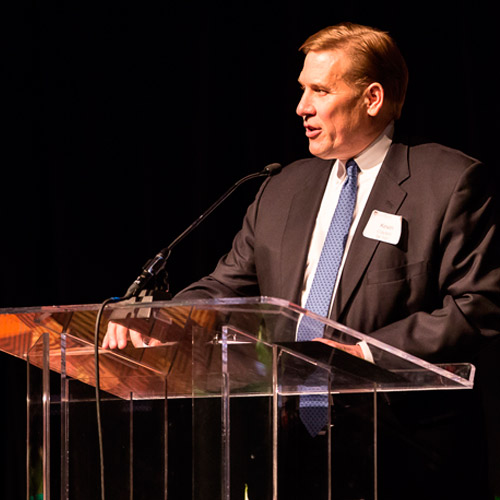
Kevin Clayton served as Lehigh’s interim president for the 2014-15 academic year, after Alice Gast stepped down as the university’s 13th president.
It was fitting that Clayton, vice chair of the Lehigh Board of Trustees, was asked to serve during the transition to John Simon. He and his family have longstanding ties to—and a profound love for—the university, and have provided continuous leadership and financial support. This relationship began with the family patriarch, the late William L. Clayton ’51, who was a longtime Lehigh trustee, and continues as a total of 12 family members have earned Lehigh degrees.
Kevin Clayton is vice chairman of Makena Capital Management. Prior to serving as interim president, he was a principal and director of the global investment management firm Oaktree Capital Management, L.P. In honor of his parents, Kevin and his wife, Lisa, established the William L. and Carol L. Clayton Endowed Scholarship Fund in 2003. Among their contributions, they also have endowed the deanship for the College of Business and Economics.
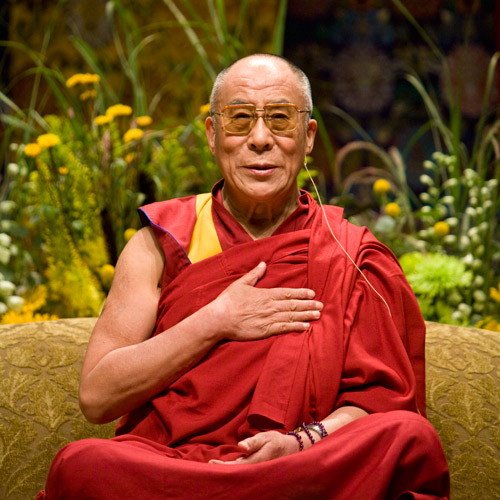
For six days in July 2008, His Holiness the 14th Dalai Lama delivered historic lectures at Lehigh on entitlement and well-being, drawing crowds to Stabler Arena that spanned generations and continents. The spiritual leader of Tibet, who won the Nobel Peace Prize in 1989, taught Tsong-kha-pa’s Great Treatise on the Stages of the Path to Enlightenment: The Lamrim Chenmo. It was his first visit to the Lehigh Valley and his most extensive teaching on the classic Tibetan Buddhist text in North America.
“I am just one human being,” the Dalai Lama told his audience. “Among six billion human beings, I’m just one of them. We all six billion human beings share one planet. We all survive under one sun.”
In a lead-up to his visit, Tibetan Buddhist monks painstakingly created a sand mandala in the Linderman Library rotunda, then immediately dismantled it to illustrate the impermanence of life.
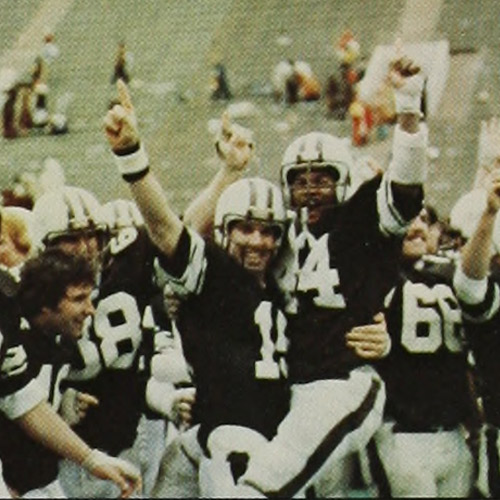
Lehigh’s football tradition dates all the way back to 1884, and over the course of more than a century of play, the program has enjoyed more than a few great achievements.
Lehigh has claimed 10 conference titles and nine NCAA Division I-AA/FCS playoff berths, and has helped make its annual grudge match against Lafayette the single most played rivalry in all of college football. But the program’s finest moment came on a chilly Texas day in December of 1977.
Coached by the great John Whitehead, who would rack up a record of 75-38-2 during his Lehigh tenure, the ’77 Engineers posted a 9-2 regular season mark, then knocked Massachusetts (30-23) and the University of California-Davis (39-30) en route to the Pioneer Bowl. It was there, in Wichita Falls, Texas, that Lehigh blitzed Jacksonville State by the score of 33-0—and lifted the national championship trophy for the first time.
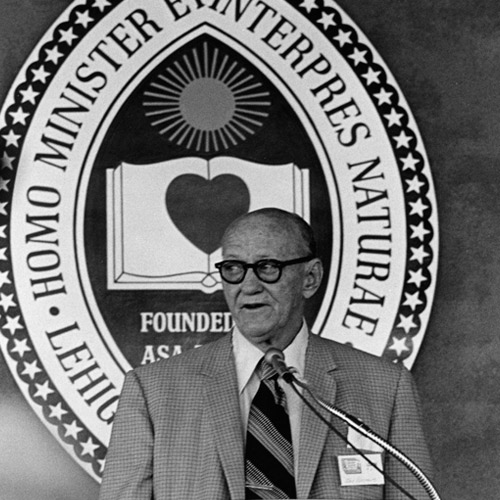
In 1975, when the editors of Fortune chose 19 men for permanent membership in the magazine’s Hall of Fame of Business Leadership, they included George Washington, Henry Ford, Thomas Edison—and Monroe J. Rathbone.
Jack Rathbone served with the Army in World War I, earned a B.S. in chemical engineering from Lehigh in 1921 and joined Standard Oil Co. of Louisiana. In 23 years with the company, he rose to plant manager and president and helped develop the world’s first fluid catalytic cracking unit, dramatically increasing the efficiency of oil refining.
Rathbone later served as president of Esso Standard Oil and as president of Jersey Standard, whose reorganization into Exxon Co., one of the largest in American business history, he helped facilitate. His policy of easing Exxon’s dependence on Middle Eastern oil preceded the Arab oil embargo and was characterized as “perhaps the most important decision in the company's history.”
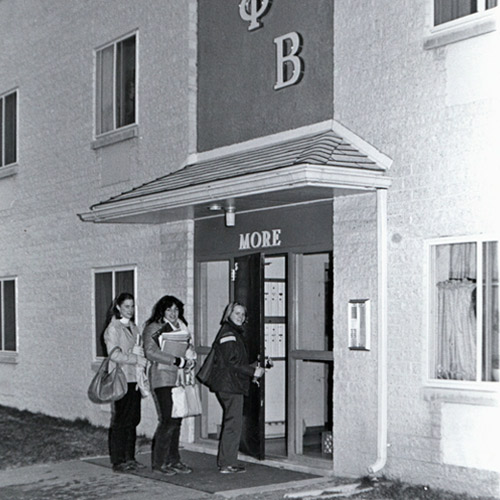
In 1975, Alpha Phi, followed by Alpha Gamma Delta and Gamma Phi Beta, became the first sororities to be recognized at Lehigh. Today, there are 12, with the latest, the historically African-American sorority Sigma Gamma Rho, chartering on campus this year.
The first sorority to obtain permanent housing on The Hill was Alpha Phi, in 1996. After that, whenever fraternities were removed from The Hill, sororities were offered permanent houses there in the order that they were established at Lehigh.
The first chapter of a Greek fraternity – Phi Kappa Sigma – was established at Lehigh on Dec. 22, 1869. Today there are 20.
The fraternity and sorority communities are integral to the Lehigh campus experience.
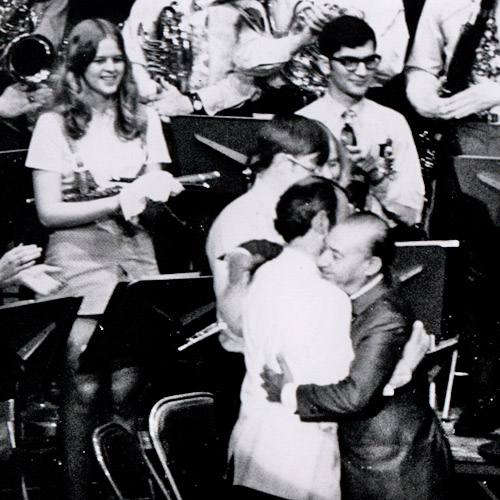
They called him "Boss." A generation of Lehigh student-singers revered Robert Cutler, who directed Lehigh's choirs from 1954 to 1979. To address Cutler as "Bob" seemed disrespectful; to call him "Professor" belied the warmth of a man who would take soup to the dorm room of an ill student.
As director of the Glee Club, Cutler arranged joint concerts each year with singing groups at women's colleges. The Glee Club also recorded the wealth of music composed for male ensembles and performed it on tour.
In later years, Cutler's students remembered him as a man whose sole devotion was to them, a man who inspired and made them believe. A year before he died, Cutler's students gathered from around the country, rehearsed the music he had taught them and threw him a surprise 90th birthday party and concert. For his centennial, they gathered again to give him an encore.
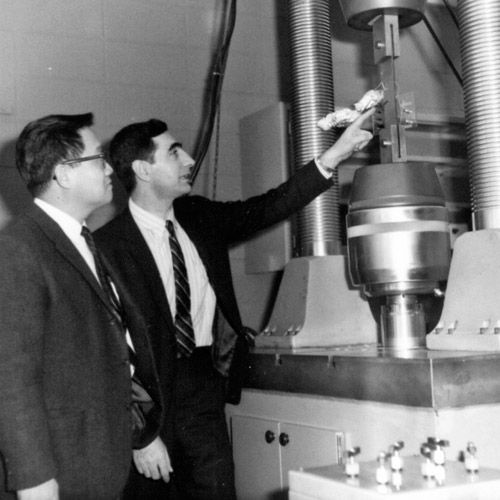
In 1998, Lehigh held a symposium honoring Fazil Erdogan, expert in fracture mechanics, professor emeritus of mechanical engineering and mechanics and former dean of engineering. Forty researchers from around the world, many of them Erdogan’s former students, presented papers.
In 2008, the Journal of Applied Mechanics published a special issue honoring Erdogan’s contributions to problems of inhomogeneous and functionally graded materials. “Professor Erdogan continues to be a source of inspiration to the mechanics community,” the journal wrote, “...and in providing selfless guidance to others.”
Erdogan joined the faculty in 1957. In the 1960s and ’70s, he and his students developed the first analytical approaches and solution techniques for the formulation and reduction of fracture mechanics problems involving layered media to systems of singular integral equations.
A member of the U.S. National Academy of Engineering, he has twice received Germany’s Alexander von Humboldt Foundation Senior Scientist Award, one of science’s top honors.
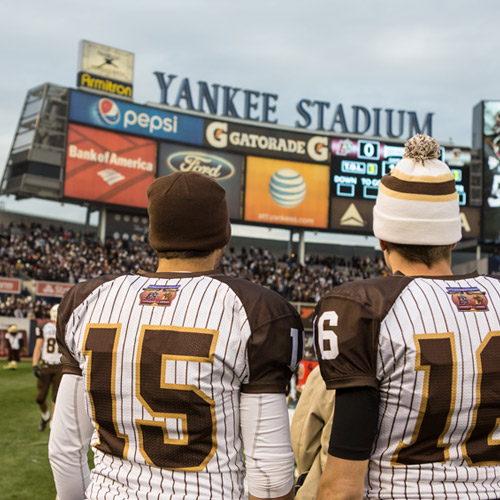
In a sport that thrives on rivalries, there is just one series that has earned the title of The Rivalry.
As of the end of the 2014 football season, Lehigh and Lafayette have played out their famous football grudge match a remarkable 150 times—19 more times than Harvard had played Yale, 35 more times than Navy had played Army and 39 more times than Ohio State had played Michigan. For the historic 150th game, the rivals traveled to New York, where they played in front of a sellout crowd at iconic Yankee Stadium. First played in 1884, the game has become one of the most treasured traditions—and most heated rivalries—in all of college sport.
Reflects former Mountain Hawks tailback Keith Sherman,’14: “Coming into Lehigh, one of the first things the older guys tell you is, ‘You don’t lose to Lafayette—in anything.”
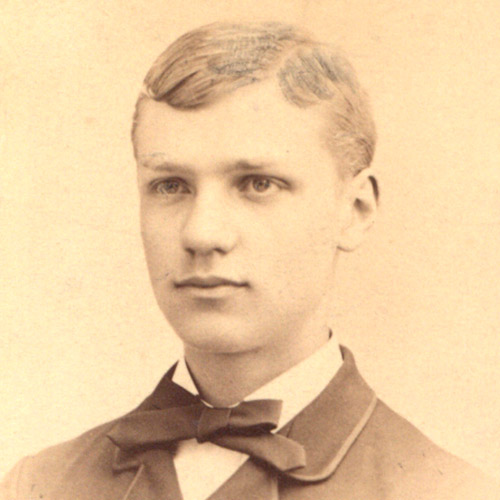
Noted metallurgist Joseph W. Richards played a major role in transforming aluminum from an exotic luxury to an everyday necessity. A member of the Class of 1886, his senior thesis described the chemistry necessary to make aluminum’s use practical. After getting his master’s here in 1891, he became the first Lehigh student to earn a Ph.D. (1893); he wrote his thesis on copper.
Richards spent almost his entire career at Lehigh, teaching metallurgy, mineralogy and blow-piping, and chairing the metallurgy department. He advocated for aluminum as the metal of the future when it was still expensive and difficult to mine. His first book, Aluminum: Its History, Occurrences, Properties, Metallurgy and Applications, Including Alloys, was published in 1887 and twice revised. A later book, Metallurgical Calculations, was translated into Italian, German and French. His students became leaders in aluminum research.
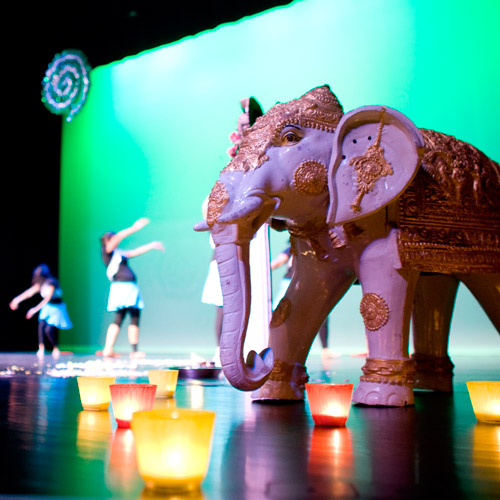
The Office of Multicultural Affairs (OMA) promotes Lehigh's commitment to diversity and inclusion through resources and advocacy for students from historically marginalized populations. Founded in 1992, the OMA’s goal is to help retain and recruit these students while enhancing their experiences through cultural programming, workshops, support groups and education.
OMA programming promotes the intellectual stimulation, self-exploration, and personal growth of students as they engage with multiculturalism within and outside the Lehigh community. There are experiential learning trips and opportunities for identity exploration; leadership development workshops; academic success seminars; mentoring programs; and collaboration with faculty, staff, and alumni to enhance multicultural competency.
OMA director Tyrone J.A. Russell, a former residence life coordinator, launched the underrepresented men's empowerment organization known as MOCA and introduced a number of culturally diverse events to campus. He also co-chairs the university’s MLK Committee, which coordinates a yearlong series of events dedicated to social justice issues.
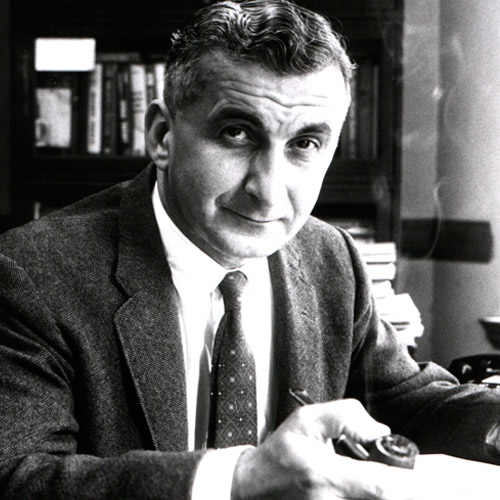
Born in Turkey to Greek parents, educated in French schools, John Karakash grew up speaking three languages. A track scholarship took him to Duke University; at the University of Pennsylvania, he helped create the world’s first computer.
At Lehigh, Karakash chaired the electrical engineering department and served 14 years as engineering dean. He recited French verse at poetry nights and often said, “At Lehigh, we educate students through engineering, not in engineering.” He took an intense interest in students, staying late to help them with homework, occasionally sleeping overnight in his office.
In retirement, Karakash published dozens of newspaper columns on international affairs. When he died in 2006, students, colleagues and neighbors remembered a kindness, a witticism, an anecdote.
“You remember Lehigh,” he said, “because someone took the time to reach you, to know you, to help you find yourself…Fundamentally, we are, and remain, in the business of growing people.”
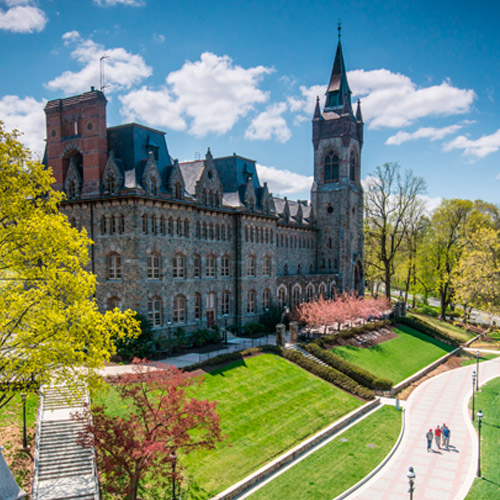
On the heart of the Asa Packer campus, occupying a picturesque slope of South Mountain, the University Center is an imposing presence. Originally named Packer Hall after Lehigh’s founder, it was the first structure specifically built for Lehigh. High Victorian in style, it was designed by architect Edward T. Potter, who built a temporary spur line from the Lehigh Valley Railroad in South Bethlehem to transport stone to the building site by rail. The building, which has a bell tower, took three years to build and was completed in 1869.
Initially, Packer Hall housed classrooms, a library, the president’s offices, a chemical laboratory and a museum. A gym was added in 1874, and the president’s offices were expanded in 1889. In the mid-1950s, the interior was gutted, floor space was added and the building was renamed.
A planned restoration is part of a university initiative.

